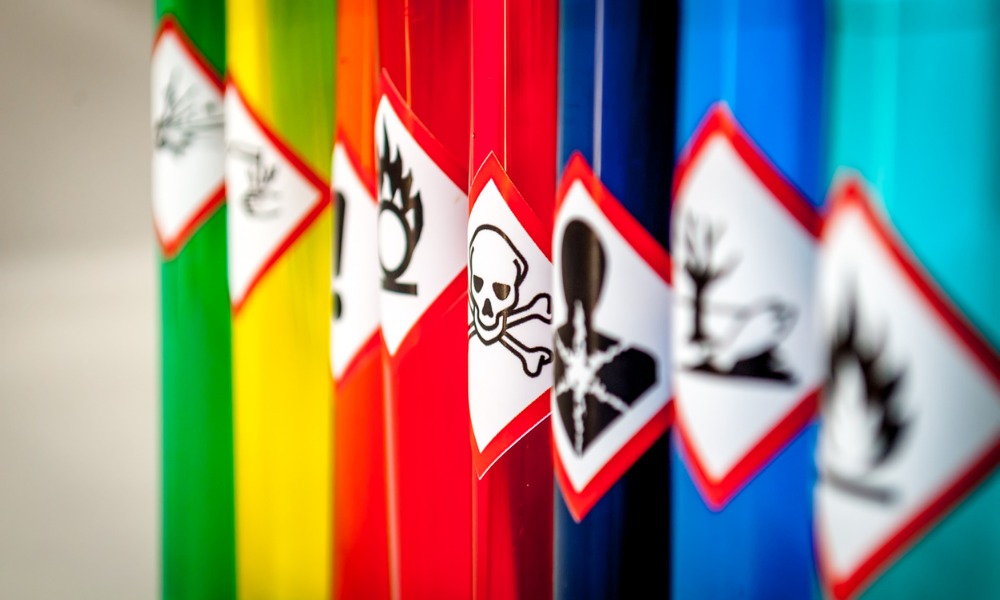Employers must ensure that no worker is exposed to a substance that exceeds the ceiling limit

WorkSafeBC has adopted changes on the exposure limits to several chemicals that may put employees at risk in the workplace.
Effective Jan. 6, WorkSafeBC has removed from the prevention manual on exposure limits the following chemicals: calcium silicate, naturally occurring as wollastonite; calcium silicate – synthetic nonfibrous; formaldehyde; furfural; liquefied petroleum gas (L.P.G.); and styrene, monomer.
Acetylene, ethane, hydrogen, methane, natural gas and propane, meanwhile, have been classified as “simple asphyxiant” under the American Conference of Governmental Industrial Hygienists Threshold Limit Values (ACGIH TLVs). These chemicals, along with butane, isomers, methyl acetylene and methyl acetylene-propadiene mixture (MAPP) were also listed as “explosion hazard.”
Boron trifluoride has been listed in the Table of ELs for Excluded Substances.
“Except as otherwise determined by the board, the employer must ensure that no worker is exposed to a substance that exceeds the ceiling limit, short-term exposure limit, or eight-hour TWA (time-weighted average) limit prescribed by ACGIH,” WorkSafeBC said in the revised prevention manual.
WorkSafeBC’s board of directors approved the adoption of the 2016, 2017 and 2018 new and revised ACGIH TLVs in a December 2019 meeting.





